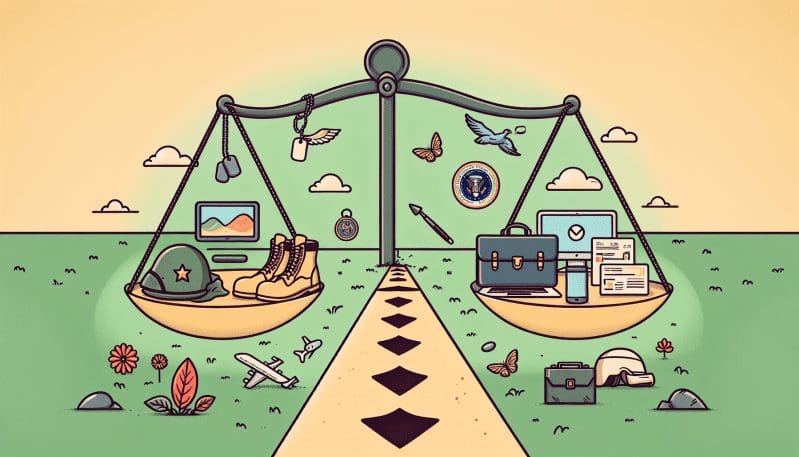When members of the military hang up their uniforms and step into civilian life, the transition can be both exciting and daunting. The rigid structures and demands of military life don’t always align neatly with the rhythms of the civilian workforce, which can create unique challenges for veterans. Specifically, finding that sweet spot between professional responsibilities and personal satisfaction—the elusive work-life balance—can be especially tricky.
For many veterans, the military ingrained a sense of structure and discipline that is hard to replicate in civilian jobs. The first question that often arises is: How do military skills translate into the civilian work environment? Veterans come with a wealth of transferable skills—leadership, teamwork, resilience, and strategic thinking, to name a few. However, translating military jargon into corporate speak, and understanding how these skills fit into different business contexts, is crucial. Veterans can utilize resources such as career counseling, professional workshops, and mentorship programs specifically designed for transitioning service members to highlight these skills in a way that resonates with civilian employers.
Beyond the skill translation, adjusting to a non-military work schedule can be challenging. The military’s 24/7 nature diverges significantly from the nine-to-five, Monday-to-Friday schedule most civilian jobs follow. For veterans, it’s essential to establish a routine that allows for both professional fulfillment and personal time. This might mean setting clear boundaries about work hours, recognizing the importance of mental health days, and taking advantage of flexible work policies when available.
But the onus is not solely on the veterans; employers also have a critical role to play. Creating an inclusive environment that acknowledges and supports the work-life balance needs of veterans is beneficial to all parties involved. Employers can foster this by offering flexible scheduling, recognizing the value of military experience during recruitment, and providing support systems like veteran employee resource groups. These measures not only honor the service of veterans but also help to leverage their unique perspectives and skills in a way that enriches the workforce.
In conclusion, achieving work-life balance as a veteran re-entering the civilian workforce is a multifaceted endeavor that requires both individual strategies and systemic support. Through mutual understanding and adjustment, both veterans and employers can create a workplace that not only acknowledges the past service of veterans but also contributes to their quality of life in the present.
As we explore the intersection between veteran experiences and contemporary workplace demands, it becomes evident that when a veteran succeeds in finding harmony between work and personal life, it’s not just an individual victory. It represents progress for veteran integration as a whole, setting a precedent for future service members transitioning back into civilian life. Let this article be an acknowledgment of the journey veterans undertake and a guidepost for the path to a well-balanced future.




























